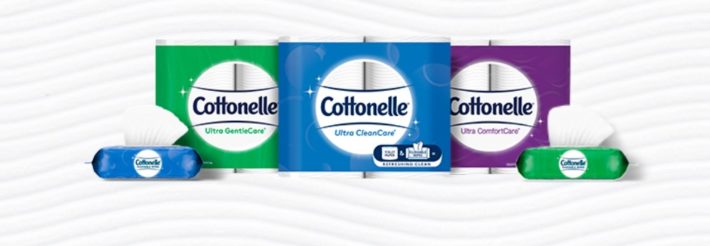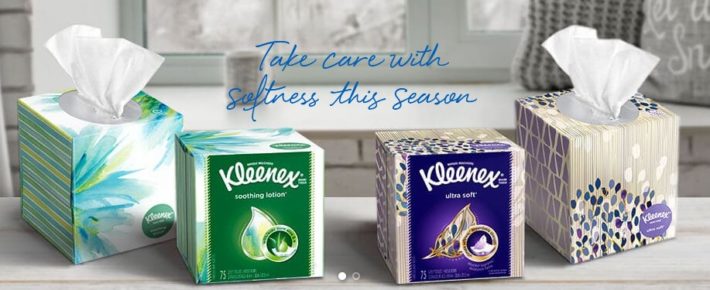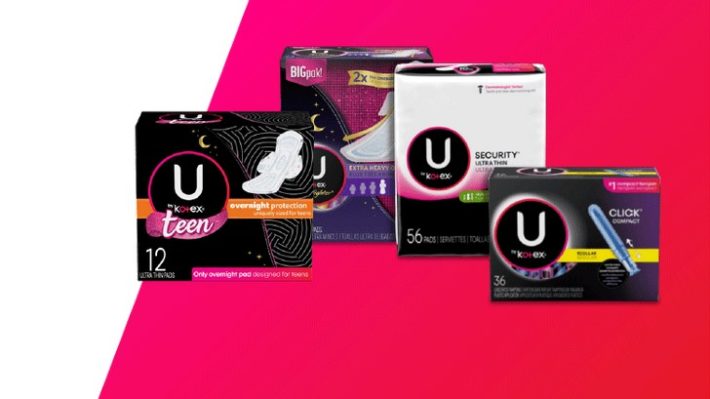Published on July 2nd, 2020 by Bob Ciura
The S&P 500 Index continues to recover off of its 52-week lows with an impressive rally over the past several weeks. For the year, the S&P 500 is (somewhat amazingly) down just 3%. But the investing climate is by no means clear. The U.S. officially entered a recession in February, and the coronavirus crisis is not yet over.
In times of economic uncertainty, high-quality dividend growth stocks become even more valuable. This is why we continue to favor the Dividend Aristocrats, a group of 65 stocks in the S&P 500 Index with 25+ consecutive years of dividend increases.
You can see the entire list of Dividend Aristocrats (along with important financial metrics like price-to-earnings ratios and dividend yields) by clicking on the link below:
Kimberly-Clark (KMB) is a Dividend Aristocrat that has increased its dividend each year, for more than 40 years in a row. The company’s strong brand portfolio has had a very large impact on the company’s ability to grow its profits (and dividends) for so many years.
This article will delve more deeply into Kimberly-Clark’s 5 billion-dollar brands, as well as the company’s future growth outlook and whether the stock is a buy today.
Company Overview
The Kimberly-Clark Corporation is a global consumer products company that was founded in 1872. Today, it operates in ~175 countries and sells disposable consumer goods, including paper towels, diapers, and tissues. It operates through two consumer-facing segments that each house many popular brands: Personal Care and Consumer Tissue. The company also operates KC-Professional, which sells products to business customers. In all, Kimberly-Clark generates over $18 billion in annual revenue.
According to the company, its products are used by 25% of the world’s population. It has the #1 or #2 market position in 80 countries. The following five brands represent Kimberly-Clark’s billion-dollar brands, meaning they generate at least $1 billion or more in annual sales.
Huggies
Disposable diaper brand Huggies is a foundational product for Kimberly-Clark. Huggies were first released in 1978. Today, Kimberly-Clark sells multiple variations of Huggies, including Huggies Special Delivery, Huggies Little Movers, Huggies Little Snugglers, and more.
The Huggies brand has been responsible for a great deal of Kimberly-Clark’s growth over the past several decades, and this continues today. Diapers continue to be a growth category for the company, particularly in the emerging markets. For example, diaper sales grew at a mid-single-digit pace in China in the most recent quarter.
Cottonelle
Cottonelle is Kimberly-Clark’s flagship toilet paper and flushing wipes brand. The company offers three unique variants of toilet paper: Cottonelle Ultra CleanCare, Cottonelle Ultra ComfortCare, and Cottonelle Ultra GentleCare. Cottonelle was introduced in the United States in 1972.
Kleenex
Kleenex is another core brand for Kimberly-Clark. The Kleenex brands sells a variety of products including facial tissue. Kleenex’s history began during the first World War. The company developed a crepe paper used as a filter for gas masks. It wasn’t long before the company realized it could apply its technology for consumer purposes, and in the early 1920’s it used its crepe paper innovation and used it to make a consumer product called Kotex.
After a period of innovation, the company changed the product by making it thinner and softer, in an effort to appeal to changing consumer preferences. The product was rebranded as Kleenex, and in 1924 Kleenex tissues were made available in the U.S. as a cold cream and makeup remover. Kleenex was launched in the U.K. one year later.
In 1929, Kimberly-Clark’s head researcher became afflicted with hay fever. He started using Kleenex tissues in place of his handkerchief. Kimberly-Clark quickly realized the massive potential that could be achieved if consumers started using Kleenex tissues in this manner, and the company soon marketed the tissues to a much broader audience of both men and women. Consumers latched on to the idea quickly, and sales of Kleenex doubled in the first year.
Scott
Scott traces its beginnings to The Scott Paper Company which was founded in Philadelphia in 1879, by brothers E. Irvin and Clarence Scott. Rumor has it that The Scott Paper Company was the first to sell toilet paper on a roll. After decades of expansion, which included the purchase of several pulp mills in multiple U.S. cities, The Scott Paper Company was eventually acquired by Kimberly-Clark in 1995.
Kotex
Kotex is a major feminine hygiene products brand. As mentioned previously, Kotex came about as a wartime innovation, and it was a major disruption of existing feminine hygiene products available at the time. Cellucotton, the material used to make Kotex pads, was originally developed during World War I as a bandage.
Kotex fundamentally changed societal attitudes regarding menstruation, by shaping modern perceptions, and it was the first product of its kind. When Kotex was marketed in 1921, it quickly gained mass appeal, as it was a highly-sought after alternative to cloth pads.
Business Overview & Recent Events
While 2020 has been a challenging year for the U.S. economy, Kimberly-Clark has performed relatively well. Sales are holding up, due to consumer stockpiling that occurred in response to nationwide shelter-in-place orders. As a manufacturer of consumer products, people will always need tissues, diapers, and the other items that comprise Kimberly-Clark’s portfolio. This simple reality has helped Kimberly-Clark’s financials remain intact so far in 2020.
In the 2020 first quarter, Kimberly-Clark’s results beat expectations for sales as well as earnings-per-share. Total revenue increased 8% to $5 billion, due to 11% organic growth, partially offset by a 2% unfavorable impact from foreign exchange and divestitures. Kimberly-Clark saw solid volume growth of 8% for the quarter, a reflection of the rising demand amid nationwide stay-at-home orders. All major product categories and geographic regions saw higher volumes in the first quarter.
Adjusted earnings-per-share jumped 28% to $2.13 for the first quarter, compared with the same quarter last year. In addition to organic revenue growth, Kimberly-Clark generated significant cost savings from the company’s ongoing cost reduction programs. Input costs were lower by $115 million for the quarter, driven by pulp pricing.
Consumers will still need these products even in recessions, which is why Kimberly-Clark has maintained such a long history of growth. Investors can expect Kimberly-Clark to remain highly profitable in 2020, despite the fact that the U.S. economy officially entered a recession in February. The company’s high level of recession-resistance is a big reason why this Dividend Aristocrat will continue to increase its dividend each year for many years.
Valuation & Dividend Analysis
Based on our expected earnings-per-share of $7.45 for 2020, Kimberly-Clark stock trades for a price-to-earnings ratio of 19. This is slightly above the 10-year average valuation of the stock. Excluding outlier years, Kimberly-Clark has traded at an average price-to-earnings ratio of 18 over the last decade. We consider 18 to be fair value for Kimberly-Clark stock.
As a result, we consider the stock to be slightly overvalued at the present time. This could have a negative impact on shareholder returns. Consider that if the stock returned to a price-to-earnings ratio of 18 over the next five years, annual returns would be reduced by approximately 1.1%.
Future earnings-per-share growth and dividends will offset the impact of overvaluation. We expect the company to generate adjusted EPS growth of 4% per year, based on a combination of revenue growth, cost cuts, and share repurchases. We believe 4% annual EPS growth is a feasible expectation for Kimberly-Clark, thanks in large part to its strong brand and durable competitive advantages.
Lastly, Kimberly-Clark stock has a current dividend yield of 3%. While Kimberly-Clark should not be viewed as a high-yield stock, it still provides a higher yield than the S&P 500 Index. The broader market has an average yield of ~2% right now. Put differently, buying Kimberly-Clark stock instead of the S&P 500 Index will provide 50% higher dividend income.
And, Kimberly-Clark grows its dividend each year, which provides even greater income over time. The company has increased its dividend for 48 years in a row, including a 3.9% dividend increase in January. The combination of earnings-per-share growth and dividends, partially offset by a declining valuation multiple, are expected to generate total shareholder returns of nearly 6% per year over the next five years. This is not a very high expected rate of return, but the stock remains an attractive holding for dividend growth investors.
Final Thoughts
The U.S. economy officially entered a recession in February, ending the longest economic expansion in its history. Economic data has improved recently, suggesting a moderate recovery, but much remains unknown as to where the economy goes from here. In a time of elevated uncertainty, risk-averse income investors would do well to focus on quality stocks such as the Dividend Aristocrats.
Kimberly-Clark is a Dividend Aristocrat with a time-tested business model, due in large part to its strong brand portfolio. The company has multiple leading brands which have provided it with steady growth for decades. Thanks to its 5 billion-dollar brands, investors can expect consistent growth in profits and dividends for many years to come. With a 3% dividend yield and a high likelihood of annual dividend increases, Kimberly-Clark is an attractive stock for dividend growth investors.









